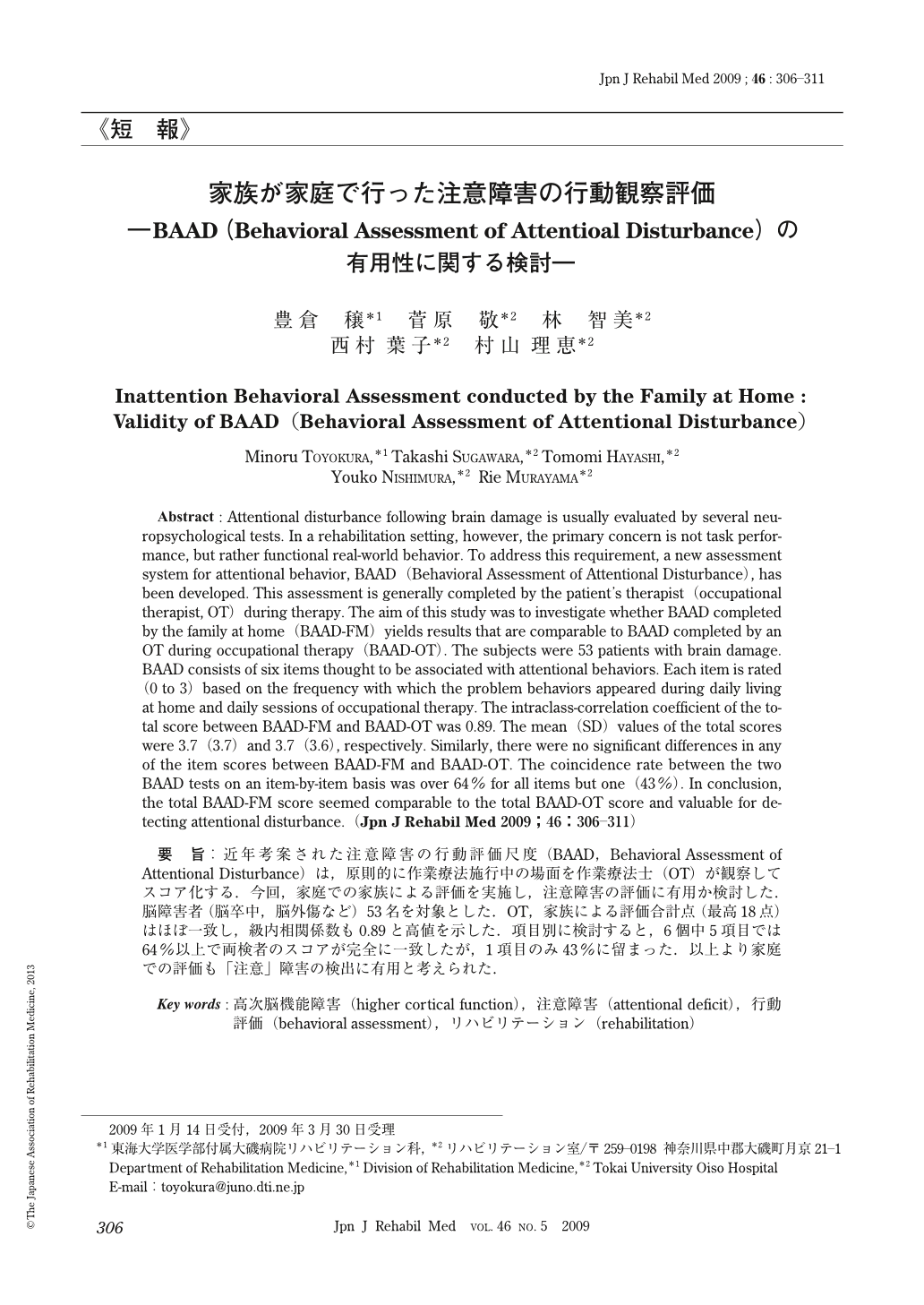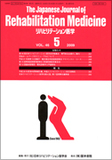Japanese
English
- 販売していません
- Abstract 文献概要
- 1ページ目 Look Inside
- 参考文献 Reference
要旨:近年考案された注意障害の行動評価尺度(BAAD,Behavioral Assessment of Attentional Disturbance)は,原則的に作業療法施行中の場面を作業療法士(OT)が観察してスコア化する.今回,家庭での家族による評価を実施し,注意障害の評価に有用か検討した.脳障害者(脳卒中,脳外傷など)53名を対象とした.OT,家族による評価合計点(最高18点)はほぼ一致し,級内相関係数も0.89と高値を示した.項目別に検討すると,6個中5項目では64%以上で両検者のスコアが完全に一致したが,1項目のみ43%に留まった.以上より家庭での評価も「注意」障害の検出に有用と考えられた.
Abstract : Attentional disturbance following brain damage is usually evaluated by several neuropsychological tests. In a rehabilitation setting, however, the primary concern is not task performance, but rather functional real-world behavior. To address this requirement, a new assessment system for attentional behavior, BAAD (Behavioral Assessment of Attentional Disturbance), has been developed. This assessment is generally completed by the patient's therapist (occupational therapist, OT) during therapy. The aim of this study was to investigate whether BAAD completed by the family at home (BAAD-FM) yields results that are comparable to BAAD completed by an OT during occupational therapy (BAAD-OT). The subjects were 53 patients with brain damage. BAAD consists of six items thought to be associated with attentional behaviors. Each item is rated (0 to 3) based on the frequency with which the problem behaviors appeared during daily living at home and daily sessions of occupational therapy. The intraclass-correlation coefficient of the total score between BAAD-FM and BAAD-OT was 0.89. The mean (SD) values of the total scores were 3.7 (3.7) and 3.7 (3.6), respectively. Similarly, there were no significant differences in any of the item scores between BAAD-FM and BAAD-OT. The coincidence rate between the two BAAD tests on an item-by-item basis was over 64% for all items but one (43%). In conclusion, the total BAAD-FM score seemed comparable to the total BAAD-OT score and valuable for detecting attentional disturbance.

Copyright © 2009, The Japanese Association of Rehabilitation Medicine. All rights reserved.


